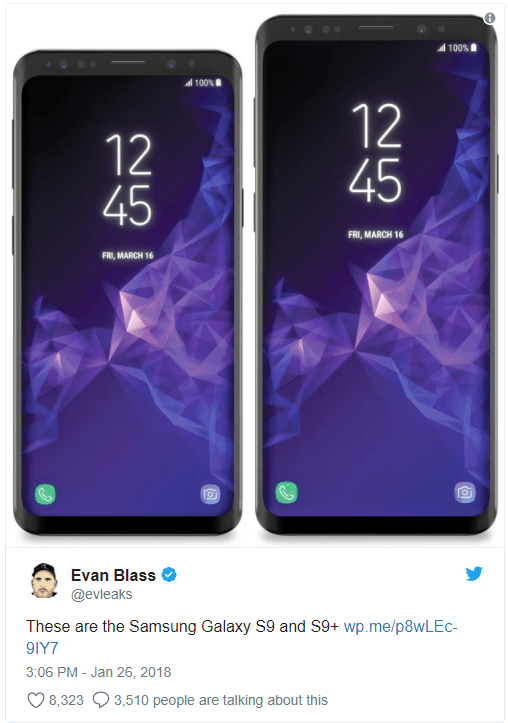Samsung is set to reveal its latest flagship device, the Galaxy S9, on February 26th. The S9 is rumoured to continue the popular trend of bezel-less screens, sporting a 5.77″ edge-to-edge display, termed by Samsung as an “Infinity Display”. The Infinity displays have been showcased on previous Samsung models including the S8, the S8 Plus and Note 8. For those keen on previous designs, the Galaxy S9 should follow closely to the look of S8 and is expected to be released alongside a second, larger version, the Galaxy S9+.
Despite a similar exterior, the internal specs of the S9 are expected to vastly improve. It’s rumoured the S9 will include facial identification technology as an updated version of the S8’s iris scanner, alongside the latest version of Android and Samsung’s newest and most advanced Exynos chip, for improved performance and speed. Finally, whispers have suggested that the S9+ will feature an all-new dual-camera, while the S9 camera will take on new heights with a souped up sensor, capable of 1,000 frames per second.
From 02.25.2018. #Unpacked will change how you experience everything. pic.twitter.com/llrGt0Q6gF
— Samsung Mobile (@SamsungMobile) January 25, 2018
Following the February announcement, it's likely the new Samsung Galaxy S9 and S9+ will be officially released around mid to late March, with prices expected to be between £649 and £799 (SIM-Free). Thinking of upgrading? Our overview below offers the benefits of the latest model.
How will the new model compare?
Samsung Galaxy S8
Samsung Galaxy S9
Check back at the blog on the 27th of February for a full review of the new devices.

